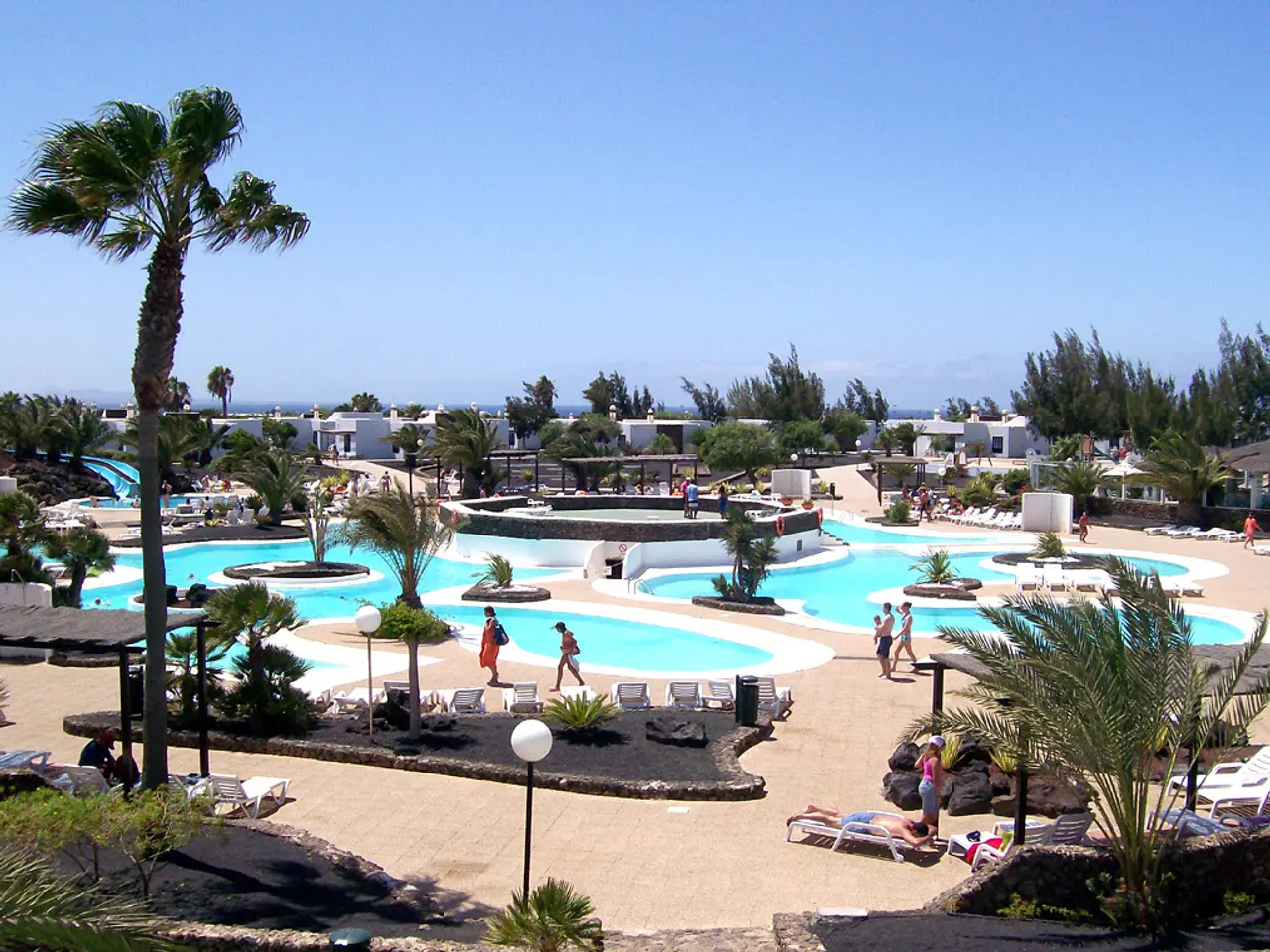Immersing in Rivers During Summer: That Sensational Summer Sensation
In the heart of Basel, Switzerland, a unique summer tradition unfolds along the banks of the Rhine. This long-standing local tradition has evolved into an organised annual event known as the "Rhine Swim" (Rheinschwimmen), where thousands of participants float or swim down the river using waterproof bags called Wickelfisch to keep their belongings dry.
The Wickelfisch, a waterproof plastic bag shaped like a fish, was invented by German designer Tilo Ahmels in 2002 and has become an unofficial symbol of Basel. To keep the clothes inside the Wickelfisch dry, it must be rolled around its fin seven times, according to instructions.
The history of swimming in the Rhine at Basel is steeped in tradition. The river is regularly monitored for cleanliness, making swimming safe and popular among locals. Safety measures include the use of the Wickelfisch bag, which helps swimmers carry personal items securely while floating, and the presence of public access points with facilities like changing rooms and lockers at bathing houses such as Rheinbad St. Johann (established 1896) and Rheinbad Breite. These bathing houses provide safer entry and exit points for swimmers and offer amenities like sunbathing decks and, in the case of Rheinbad Breite, a restaurant, bar, and winter sauna.
The official annual Rhine Swim event typically takes place in August. For 2025, it is scheduled on August 12. This event attracts large crowds who swim or float down the river together, creating a festive atmosphere and celebrating Basel's culture and connection to the Rhine.
Swimming in the Rhine is a popular summer activity in Kleinbasel, with hundreds of people participating over a stretch of three kilometers on some days. The Rhine swimming area runs along the Kleinbasel shore, and public showers and toilet facilities are available along the swimming stretch. However, swimmers are advised to avoid bridge pillars, as whirlpools can form there.
The Rhine's history as a swimming destination is not without its challenges. Historically, the Rhine was used as a sewer, was forbidden for swimming until the 18th century, and had poor water quality for much of its history. In the 1980s, the Rhine in Basel was considered a drain for industrial waste from chemical companies. A significant event in 1986 saw a chemical fire at the Schweizerhalle plant of the Sandoz company, causing a massive fish kill due to contaminated water flowing into the Rhine. Since then, filter plants have been installed, and measuring stations have been set up to monitor the water quality of the Rhine.
Despite its past, the Rhine is now clean enough to swim in, and swimming in Basel's Rhine offers a unique and enjoyable experience for both locals and visitors. The accessible public waterfront areas in Basel, especially in Klein Basel, with its beautiful river views and easy river access, enhance safety and enjoyment for swimmers.
For those interested in participating in the Rhine Swim, the swim pack can be bought at the Stadtcasino on Barfüsserplatz or rented for 10 francs for 24 hours from June to September. Whether you choose to join the annual Rhine Swim or simply enjoy a leisurely swim at the Rheinbad Breite, swimming in Basel's Rhine is an experience not to be missed.
Community policies for the Rhine Swim encourage participants to follow safety guidelines, including securely tying their Wickelfisch using the rolling method.Participating in outdoor-living activities, such as the Rhine Swim, and enjoying home-and-garden amenities like the Rheinbad St. Johann or Rheinbad Breite, contribute to Basel's unique lifestyle that blends urban culture with sports and leisure.




